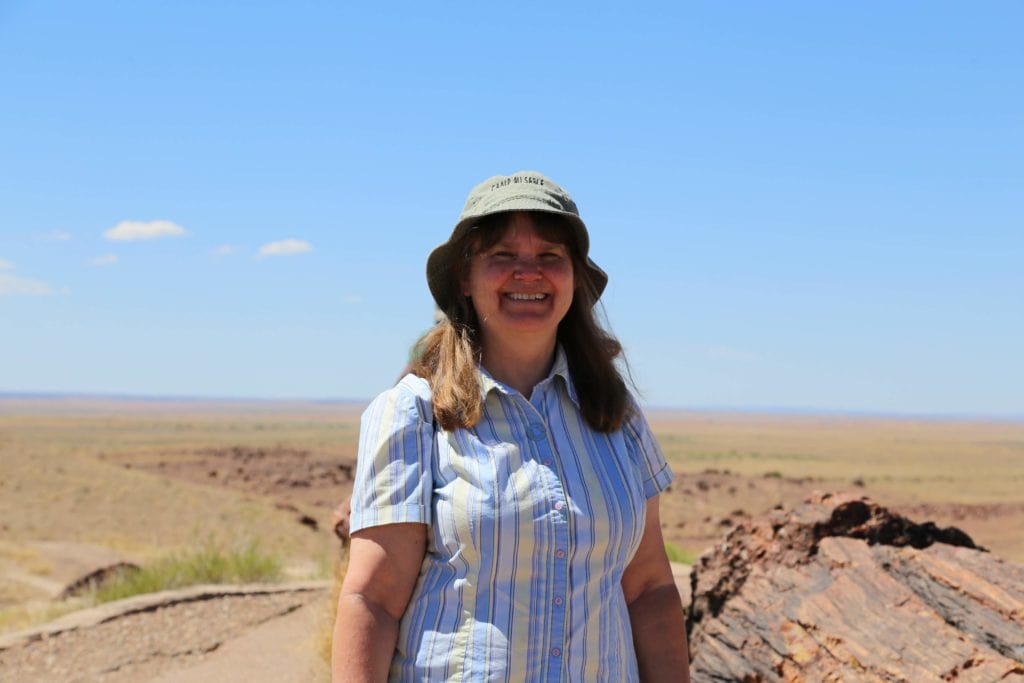
Just before the North American Division Educators’ Convention in Phoenix, Arizona, United States, in August, more than 40 Seventh-day Adventist science teachers embarked on a journey to explore various geological landmarks in that state.
The field trip, led by Geoscience Research Institute (GRI) scientists, offered participants a firsthand experience that enhanced their appreciation and understanding of geology and the history of the earth, organizers said. The goal was to enable them to integrate faith and science more effectively in their classrooms. The group visited the Petrified Forest National Park, Grand Canyon National Park, and Sunset Crater Volcano National Monument.
At the Petrified Forest National Park, teachers observed the remains of trees that had turned to stone, revealing the wonders of natural transformation. Here they discussed the process of fossilization, how long it takes for wood to petrify, and how fossils paint a picture of past animal interactions and their environment. Walking among these fossilized tree logs provided the teachers an opportunity to discuss natural processes and sediment transport rates.
The trip through the Grand Canyon offered a setting for discussions surrounding the origins debate and the geologic record. As the educators gazed into the vast chasm, they could not help but be humbled by the scale and complexity of the earth’s geological history, organizers said.
Teachers were also presented with the unique opportunity to study the intricate rock formations that can be viewed through the lens of catastrophism or gradualism. Catastrophism is an approach to earth history which suggests that in the past, the earth experienced a geological process or event of uncommon scale, such as a flood. Gradualism, or uniformitarianism, is a theory that the geologic record formed gradually and not by sudden change.
The teachers also observed fossilized footprints and other fossils embedded in the rock while hiking down into the canyon on the South Kaibab Trail.

After experiencing the wonders of nature and absorbing the information presented, educators engaged in in-depth discussions and workshops provided by GRI director Ronny Nalin, along with scientists Ben Clausen, Tim Standish, and Raul Esperante. They explored ways to effectively blend faith and science in classroom teaching, with the presenters suggesting that it is possible to respect science while remaining faithful to God and the Bible.
“As educators,” Evelyn Hainey, a teacher at Thompsonville Christian School in Illinois, said, “we stress the importance of learning to read for our students, and this trip gave us the tools we need to begin learning to read the rocks. How the chemical composition of the rocks changes the shapes, colors, and textures of the rocks. How the layers and distribution of fossils within the layers opens a window on how one can use challenge and contrast as a starting point for introducing a biblical timeline to a student.”
Her colleague, Elizabeth Atencio, said her takeaway lesson was the importance of not trying to hide reality from her elementary school students. “Sheltering them from things like evolution will not help them, as they will simply encounter it later in life somewhere else,” she said. “Instead, we need to address it, but also train them in how to see, understand, and stand up for the truth of science from the viewpoint of creation."
Armed with fresh perspectives and a commitment to nurturing their students’ spiritual and scientific growth, participants said they now seek to ignite a transformative spark in the education community. Organizers agreed. “They will be prepared to enrich the lives of their students by fostering a deeper appreciation for the natural world and its Creator,” they said.
Rachel Jameson, a teacher at Edenville Seventh-day Adventist Elementary School, said, “I am resolved to make a greater effort to give my students field experience in the sciences and to teach them that although we may not be able to explain all the evidence we find, we can still trust what God says in His Word.”
About the Geoscience Research Institute
Based in Loma Linda, California, United States, GRI’s mission is to explore the natural world, seeking to develop and share an understanding of nature consistent with biblical teaching as expressed in the Adventist Church’s statement of fundamental belief on creation. GRI resources available for educators include books, articles, posters, a valuable collection of websites, PowerPoint slides, photos, and videos. These resources can be used to plan and supplement lessons for various natural science subjects.
The original version of this story was posted by the Lake Union Herald.